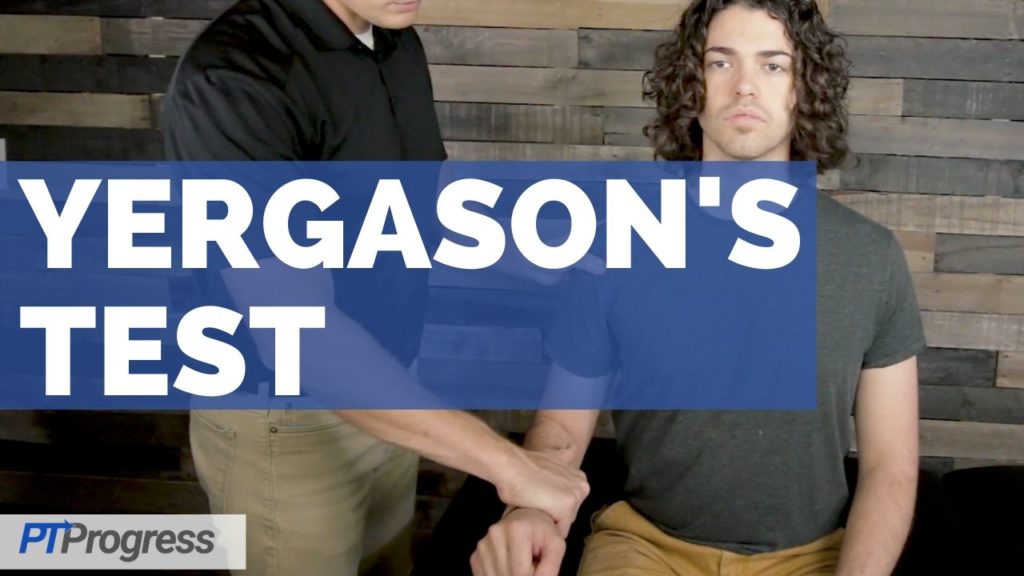
The Yergason’s test is used to identify tears in the glenoid labrum, as well as biceps pathology.
How to Perform Yergason’s Test
Position of Patient:
- Patient is sitting or standing with elbow at 90 degrees of flexion,
- Forearm should be pronated so the palm faces the ground.
Performance: The examiner stabilizes the proximal humerus palpating the bicipital groove and uses the opposite hand to provide resistance against supination at the wrist forearm. Instruct the patient to supinate their forearm while providing resistance. The examiner may also ask the patient to perform elbow flexion and external rotation as a variation of the test.
How to Interpret Yergason’s Test
Positive Finding: The test is considered positive if the patient experiences pain at the biceps tendon.
Test Accuracy / Reliability / Evidence:
Sensitivity and Specificity
Sensitivity = 0.12
Specificity = 0.95
+LR = 2.5
– LR = 0.91
Source: Alqunaee M, Galvin R, and Fahey T: Diagnostic accuracy of clinical tests for subacromial impingement syndrome: a systematic review and meta-analysis. Arch Phys Med Rehabil 2012; 93: pp. 229-236 2012 Metaanalysis
The Yergason’s test is used to identify tears in the glenoid labrum, as well as biceps pathology. Have the patient positioned in sitting or standing with elbow at 90 degrees of flexion. The forearm should be pronated so their palm faces the ground.
The examiner stabilizes the proximal humerus palpating the bicipital groove and uses the opposite hand to provide resistance against supination at the wrist forearm. Instruct the patient to supinate their forearm while providing resistance into pronation. The examiner may also ask the patient to perform elbow flexion and external rotation as a variation of the test.
Positive Finding: The test is considered positive if the patient experiences pain at the biceps tendon.

